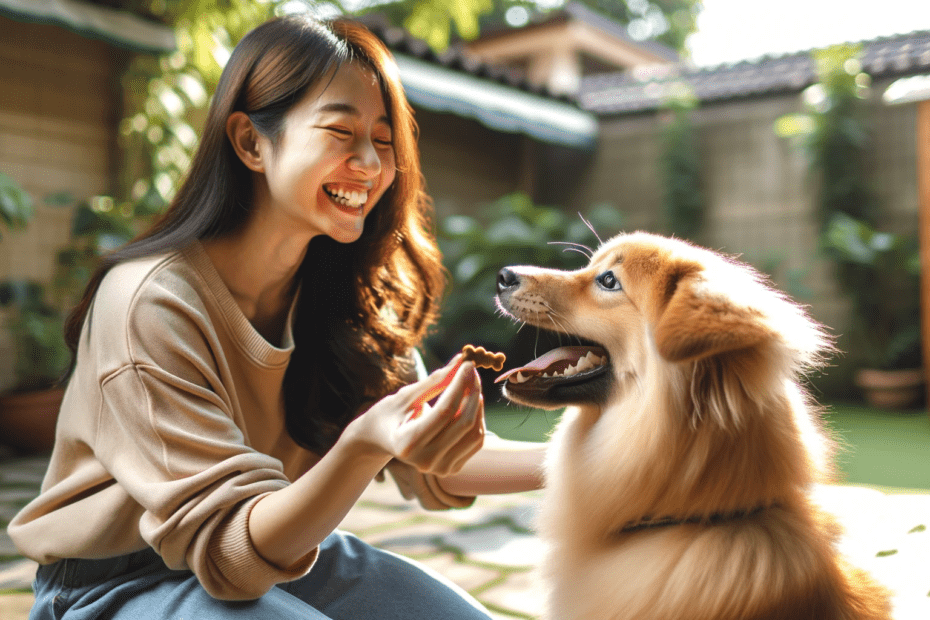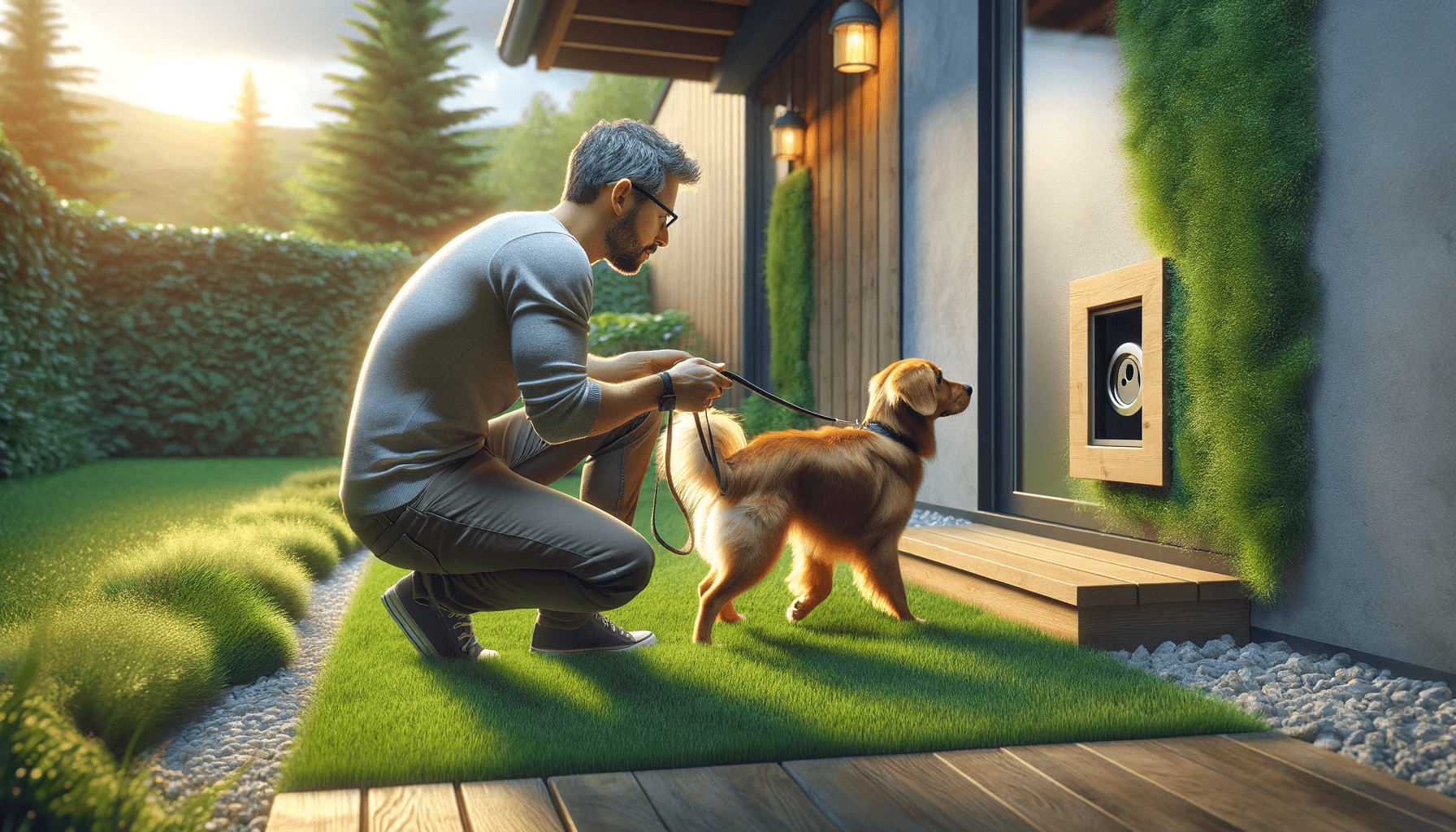Are you struggling to train your dog effectively?
Discover the power of positive reinforcement in dog training. By using rewards and creating a positive training environment, you can teach your furry friend basic commands and address behavior issues.
Leash training becomes a breeze when you employ positive reinforcement techniques. Not only does this approach build trust and bonding with your dog, but it also offers numerous advantages in training.
Get ready to see amazing results with the power of positive reinforcement.
Key Takeaways
- Positive reinforcement builds a strong bond based on trust and mutual respect between you and your dog.
- Choosing the right rewards, such as treats and toys, based on your dog's preferences, is important in positive reinforcement training.
- Consistency and avoiding punishment or negative reinforcement creates a positive training environment.
- Positive reinforcement can be used to teach commands and tricks, address behavior issues, and create a positive learning environment for dogs of all ages and breeds.
Understanding Positive Reinforcement
When training your dog, you can effectively reinforce desired behaviors by using positive reinforcement. This method involves rewarding your dog with treats, praise, or affection when they exhibit the behavior you want to encourage.
Positive reinforcement has several benefits in dog training. Firstly, it helps to build a strong bond between you and your dog based on trust and mutual respect. By rewarding your dog for good behavior, they learn to associate your presence with positive experiences.
Secondly, positive reinforcement creates a positive learning environment for your dog. They're more likely to be engaged and motivated to learn when they're rewarded for their efforts. Additionally, positive reinforcement training methods are humane and don't involve any physical punishment or aversive techniques, which can cause fear and anxiety in dogs.
However, there are some common misconceptions about positive reinforcement training. Some people believe that it only works for basic commands and can't be used for more complex behaviors. This isn't true. Positive reinforcement can be used to train dogs of all ages and breeds, and it can be applied to a wide range of behaviors, from basic obedience to advanced tricks.
Another misconception is that positive reinforcement makes dogs spoiled or overly dependent on treats. While treats are initially used as a reward, they can be gradually phased out and replaced with other forms of reinforcement, such as verbal praise or playtime.
Positive reinforcement training is a powerful and effective method that can help you train your dog in a way that's both enjoyable and rewarding for both of you.
Choosing the Right Rewards
To effectively choose the right rewards for your dog's training, you should consider their preferences and what motivates them. When it comes to treats, there are a variety of options that can be used for effective reward-based training. Soft, chewy treats are often preferred by dogs as they're easy to eat and have a strong aroma that captures their attention. These treats can be broken into smaller pieces to make them last longer and provide multiple rewards during a training session. Alternatively, crunchy treats can be used for dogs who enjoy a bit of a challenge and like to chew. It's important to choose treats that are healthy and nutritious, avoiding those that are high in sugar or artificial ingredients.
In addition to treats, incorporating playtime as a reward in dog training can be highly effective. Many dogs are motivated by play and enjoy activities such as fetch, tug-of-war, or hide-and-seek. Using these activities as rewards can provide mental and physical stimulation, making the training process more enjoyable for your dog. Remember to choose toys that are safe and appropriate for your dog's size and breed.
Creating a Positive Training Environment
To create a positive training environment for your dog, consistently reinforce desired behaviors using rewards and praise. Positive reinforcement is a powerful tool in training your dog, as it encourages them to repeat behaviors that are rewarded.
Here are three key points to consider when creating a positive training environment:
- Importance of consistency in positive training methods: Consistency is crucial in dog training. Dogs thrive on routine and repetition, so it's important to consistently reinforce desired behaviors. By consistently rewarding your dog for good behavior, they'll learn what's expected of them and be more likely to repeat those behaviors in the future.
- Incorporating positive reinforcement in potty training: Potty training can be challenging, but positive reinforcement can make the process smoother. Whenever your dog eliminates in the appropriate spot, immediately praise and reward them. This reinforces the idea that going potty in the right place is a desirable behavior. Consistency and positive reinforcement will help your dog understand where they should go potty.
- Creating a positive and supportive atmosphere: A positive training environment is essential for effective training. Avoid punishment or negative reinforcement, as it can create fear and anxiety in your dog. Instead, focus on positive reinforcement, using treats, toys, and praise to reward your dog for good behavior. This will create a positive association with training and make it a more enjoyable experience for both you and your dog.
Teaching Basic Commands With Positive Reinforcement
To effectively teach your dog basic commands, continue reinforcing desired behaviors through positive reinforcement. Positive reinforcement involves rewarding your dog with treats, praise, or play when they perform the desired behavior correctly. This method not only strengthens the bond between you and your furry friend but also motivates them to repeat the behavior in the future.
Start by teaching your dog simple commands like 'sit,' 'stay,' and 'come.' Use treats or praise as a reward when they follow the command correctly. Be patient and consistent, repeating the command and reward until they understand what's expected of them. As they become more comfortable with these basic commands, you can gradually introduce more advanced tricks.
Incorporating positive reinforcement in agility training is also effective. Use treats or toys as rewards when your dog successfully completes an obstacle or follows your commands during an agility course. This will make the training process more enjoyable for your dog and encourage them to perform at their best.
Solving Behavior Issues Through Positive Reinforcement
Address behavior issues in your dog through the power of positive reinforcement. Positive training methods can be highly effective in addressing various behavior issues in dogs.
Here are three common behavior issues that can be resolved using positive reinforcement:
- Addressing fear aggression with positive reinforcement: Fear aggression is a common issue in dogs, where they display aggressive behavior when they feel threatened or afraid. Positive reinforcement can help address this issue by gradually exposing the dog to the trigger that causes fear and rewarding calm behavior. This helps the dog associate the trigger with positive experiences, reducing fear and aggression.
- Resolving separation anxiety using positive training methods: Separation anxiety is a condition where dogs experience extreme distress when left alone. Positive reinforcement can help alleviate separation anxiety by gradually desensitizing the dog to being alone and rewarding calm behavior. This can be done by starting with short periods of separation and gradually increasing the duration, while providing rewards and positive reinforcement for calm behavior.
- Modifying destructive behavior with positive reinforcement: Dogs may exhibit destructive behavior out of boredom, anxiety, or frustration. Positive reinforcement can help modify this behavior by redirecting their focus onto appropriate outlets such as interactive toys, puzzle feeders, or training exercises. By rewarding desirable behavior and providing mental and physical stimulation, dogs can learn alternative behaviors and reduce destructive tendencies.
Using Positive Reinforcement for Leash Training
When it comes to leash training, positive reinforcement can be an effective method for teaching your dog to walk calmly by your side. Building confidence during leash training is crucial for your dog to feel comfortable and secure while on a walk. Start by practicing in a quiet and familiar environment, gradually introducing more distractions as your dog becomes more confident. Reward your dog with treats and praise whenever they exhibit the desired behavior, such as walking calmly without pulling. This positive reinforcement will help your dog associate the act of walking on a leash with positive experiences, and they'll be more likely to repeat the behavior in the future.
Addressing distractions during leash training is also important. Dogs are naturally curious and easily distracted, so it's essential to gradually expose them to different stimuli while on a walk. Start with low-level distractions, such as other dogs or people at a distance, and reward your dog for maintaining focus on you. As your dog becomes more comfortable, gradually increase the level of distractions. If your dog gets distracted, use a cue word to regain their attention and reward them when they refocus on you.
Consistency and patience are key during leash training, as it may take time for your dog to master walking calmly by your side. With positive reinforcement and consistent practice, you can build a strong foundation for successful leash training.
Building Trust and Bonding Through Positive Training
As you continue to utilize positive reinforcement for leash training, it's important to understand that building trust and bonding with your dog is an integral part of the process. Positive training techniques not only help in teaching your dog new behaviors but also create a strong and loving relationship between you and your furry companion.
Here are three ways positive reinforcement can help in building trust and bonding with your dog:
- Using positive reinforcement to address separation anxiety: Separation anxiety can cause distress for both you and your dog. By using positive reinforcement techniques such as rewards and praise, you can help your dog associate being alone with positive experiences. This can gradually reduce their anxiety levels and strengthen the trust they've in you.
- Building confidence in fearful dogs through positive training techniques: Fearful dogs may require extra care and patience. Positive training methods can help them overcome their fears by gradually exposing them to the things that make them anxious in a positive and controlled manner. Through consistent positive reinforcement, you can build their confidence and strengthen the bond between you and your dog.
- Creating a positive and trust-based training environment: Positive reinforcement not only focuses on rewarding good behavior but also emphasizes creating a positive and trust-based training environment. By using positive reinforcement techniques such as treats, toys, and praise, you can establish a strong bond with your dog based on trust, respect, and mutual understanding.
Advantages of Positive Reinforcement Training
One advantage of positive reinforcement training is that it allows you to effectively communicate and reinforce desired behaviors to your dog. By using positive reinforcement, such as rewards or treats, you can encourage your dog to repeat behaviors that you find desirable. This method focuses on rewarding good behavior rather than punishing bad behavior, which creates a positive and enjoyable training experience for your dog.
Positive reinforcement training also has long-term benefits. It helps build a strong and trusting bond between you and your dog, as it establishes a foundation of trust and mutual respect. Dogs trained using positive reinforcement are more likely to feel secure and confident, leading to better overall behavior and obedience.
Consistency plays a crucial role in positive reinforcement training. Dogs thrive on routine, so it's important to be consistent in your commands, rewards, and expectations. By consistently rewarding desired behaviors and ignoring or redirecting undesired behaviors, you're teaching your dog what you expect from them.
Frequently Asked Questions
Can Positive Reinforcement Training Be Used for All Dog Breeds and Sizes?
Yes, positive reinforcement training can be used for all dog breeds and sizes. It is effective for small breeds and can also be used for stubborn dogs to encourage desired behaviors.
How Long Does It Typically Take to See Results With Positive Reinforcement Training?
With positive reinforcement training, you can expect to see results in a few weeks. The speed of results can be influenced by factors such as consistency, the dog's previous training, and the complexity of the behavior being trained.
Are There Any Situations Where Positive Reinforcement Training May Not Be Effective?
In some cases, positive reinforcement training may not be effective. For example, if a dog's behavior is dangerous or aggressive, punishment-based training may be necessary. There are alternative methods available for addressing such behavior issues.
Can Positive Reinforcement Training Be Used for Dogs With Aggression Issues?
Positive reinforcement training can help with aggression in dogs. By rewarding desired behaviors and ignoring or redirecting unwanted ones, you can effectively address aggression issues. Stay consistent and seek professional guidance if needed.
Are There Any Potential Drawbacks or Limitations to Using Positive Reinforcement Training Methods?
Using positive reinforcement training methods has potential drawbacks and limitations. Immediate results may be lacking, and it can be difficult to address complex behavior issues. However, overall, positive reinforcement is an effective and humane approach to dog training.
Conclusion
In conclusion, positive reinforcement is a highly effective method for training dogs.
By using rewards and creating a positive training environment, owners can teach basic commands, solve behavior issues, and build trust and bonding with their furry companions.
This approach isn't only informative and concise but also authoritative, as it has been proven to yield successful results in dog training.






